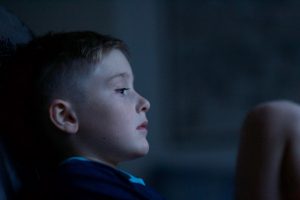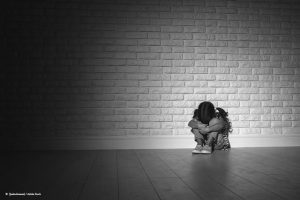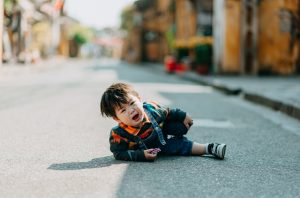
It’s happening again. A taboo of society, happening in the unlikeliest of places.
A recent preschool abuse incident blew up in social media, raising questions about the safety of children in ‘unsupervised’ child-care centres: Kinderland Preschool found itself at the center of public outrage when videos surfaced showing a staff member abusing and mistreating young children.
The incident has sparked a fire.
How did we let such behavior go unchecked for so long?
A series of heart-wrenching footage showing children being pushed, hit, pinned down, and even choked from being ‘waterboarded’ by their caretakers; the children’s cries from the physical trauma shown in the videos left viewers wincing.
Parents and the community at large are understandably furious. If the whistleblower had never come forward, how long more would the abuse continue? Were there underlying factors that persisted this criminal behavior?
With netizens spearheading a powerful movement and debate, this question must be asked:
“Who is really to blame?”
Not the First and Last Offender

[Unsplash]
Kinderland isn’t the precedent of a massive scandal for child abuse, horrifyingly.
Instead, such cases have only been on the rise in recent years: Child Protective Services under the ministry had investigated over 2,000 cases of abuse in 2021, a drastic increase from the rough 1,300 cases in 2020.
These are alarming numbers, and Kinderland has only set off bigger concerns towards this seemingly inconsequential statistic.
Did you know? A similar case, or cases happened only during the course of last month.
With every abuse case put in the spotlight, Singapore continues to be painted with society’s more insidious parts.
If we want to steer away from such a disturbing trend, it is clear that something needs to fundamentally change somewhere.
Why Does This Keep Happening?

[Unsplash]
To answer the question of why it happens, we need to understand motive and mindset.
Caretakers must undergo screenings and training to become professionals of their field, so there must be a cause for their mental boundaries to break down.
Whether in the form of personal and unresolved mental issues, difficulties in adapting, impatience, loss of interest or simply stress, a caretaker can default many of their problems to underlying trauma, violent upbringing or even the circumstances of their work environment.
As the primary offender of the Kinderland Preschool abuse incident, 33-year old Singaporean preschool teacher Lin Min allegedly finds herself under similar circumstances.
On August 30th, her lawyer defended with a claim that Lin was a childcare teacher working under the pressure of the COVID-19 pandemic, corroborating with that thought.
Investigations are still undergoing, as Lin has since been remanded to the Institute of Mental Health for a medication examination.
Were There Underlying Circumstances?

[CNA]
We’ve talked about the offender, but what about the environment?
Taking a different perspective, it can be said that suspicion would be inevitable when such a flagrant case of child abuse has remained discreet for so long.
In an environment where staff is almost always present together, it is difficult to claim that Lin was able to get away with her wildly inappropriate acts all this time.
We may instead find some answers when we ask another question: “What could have allowed Lin to keep up with the abuse?”
Was it the standards of how children can be treated, that staff had turned a blind eye to all this? Or was there an oversight on proper safeguards in place, creating blind spots for Lin and would-be offenders?
A series of lapses in judgment can cause mismanagement to happen, stretching the periods of abuse before they’re caught.
Several points were raised as investigations concluded; Kinderland Preschool’s principal Ms Mahirah Yasid reportedly claimed to worried parents before the videos surfaced, that “the teacher had used a bit of force to get my daughter to drink water, and that it wasn’t that serious”.
This statement, among many others, fully revealed the stance that the establishment had taken towards similar cases.
This raises the concern towards normalcy bias, and when it had started to spread within higher management. At what point did things escalate to this point?
Because of such an ethical breakdown, the teachers who work in such an environment would get away with misdemeanors and become increasingly bold with their actions.
Speculations had already arisen on whether the teacher colleagues had kept mum about the situation, allowing the abuse to be normalized and continue for this long.
Aftermath Amidst Concerns

“It is wrong for the principal and the bosses not to take such reports of abuse seriously.”
Reaching the attention of bigger public figures, Mdm Ho Ching, wife of Prime Minister Lee Hsien Loong has also chimed in.
She said that while the capturing of video evidence was right, reporting to regulatory agencies like the police or the Early Childhood Development Agency (ECDA) should ideally be the next course of action before escalating it to social media.
More concerns surfaced online amidst the heights of this controversy, calling for more preventive measures to be put in place for childcare centres so that regulations can be more proactive than reactive.
In light of this incident, the ECDA has made a new regulation that CCTVs will be mandatory at all preschools and government-funded early intervention centres from 1st of July next year. Kinderland has also installed 24-hour CCTVs at all the centre’s classrooms and activity areas for enhanced safety and security.
It is clear that the preschool abuse incident had set a precedent and cause for more stringent role screenings and due diligence for future management of education centres.
Child Abuse In Other Places

[Nationwide Children’s]
While Kinderland Preschool’s incident awaits closure, you may also find similar concerns across a different field.
Have you heard about similar cases occurring amidst domestic helpers?
Besides preschool teachers, domestic workers are also susceptible to such mental pressures. Evidently, local child abuse cases have also stemmed from domestic workers over the last few years.
In the pursuit of an occupation centered around the care of others, unhealthy work ethics and or lifestyle management can often turn against the caretaker; when most of their time is dedicated towards their employers, these caretakers may find themselves with little alone-time to recuperate their minds.
In some Third World countries, child abuse and neglect can even be seen to be more socially acceptable, which can play a strong part into the motives behind child abuse inflicted by migrant domestic workers.
To quote an Indian maid guilty of aggression towards a three-year old toddler, she had indulged herself to relieve her agitation, annoyance and exhaustion from working. Another Filipino maid who’d mistreated two even younger boys, claimed in court that her actions were a result of stress.
It is apparent that distressed individuals are not exempt from nationality, and that even locally-trained caretakers can succumb to aggression under high stress levels if they do not properly manage their mental well-being.
Raising Awareness Towards Child Abuse

[Pexels]
Child abuse is a heinous act that should always be taken seriously. And as such, it is with a heavy heart that we find a silver lining in the flux of public awareness to the deeper implications arising from the incident.
Raising eyebrows towards societal issues cannot be trivialized as mere intermissions of sensationalized gossip, and we as a progressive community must treat these issues with due vigilance, scrutinize and learn from past incidents.
Only by going through their histories, implications, psychology, and prevention methods, can we better progress as a society.
Moving Forward — A Society In Learning

[Pexels]
While this incident has begun with the divulging of distasteful practices, it has also conclusively put a foothold into establishing safeguards within the education system.
More emphasis will be put into the response of authorities when similar incidents occur in the future so that the safety and wellbeing of our children can be secured.
This way, offenders will become less inclined to commit from these strong precedents and stigmas.
We as a society should also understand the reasons behind child abuse so we can better identify people at risk of hurting children and other vulnerable people like elderly or the handicapped, develop effective interventions, and prevent future incidents.
To conclude, we would like to leave everyone with a thought: With the increasingly compromised minds of preschool teachers in Singapore, should the government start investing in appropriate and proactive measures towards the mental welfare of our children’s educators?
To read more about this topic, check out a few of our related articles below.
READ NEXT:
Signs of Abuse in Childcare: What Parents Need to Watch Out For
